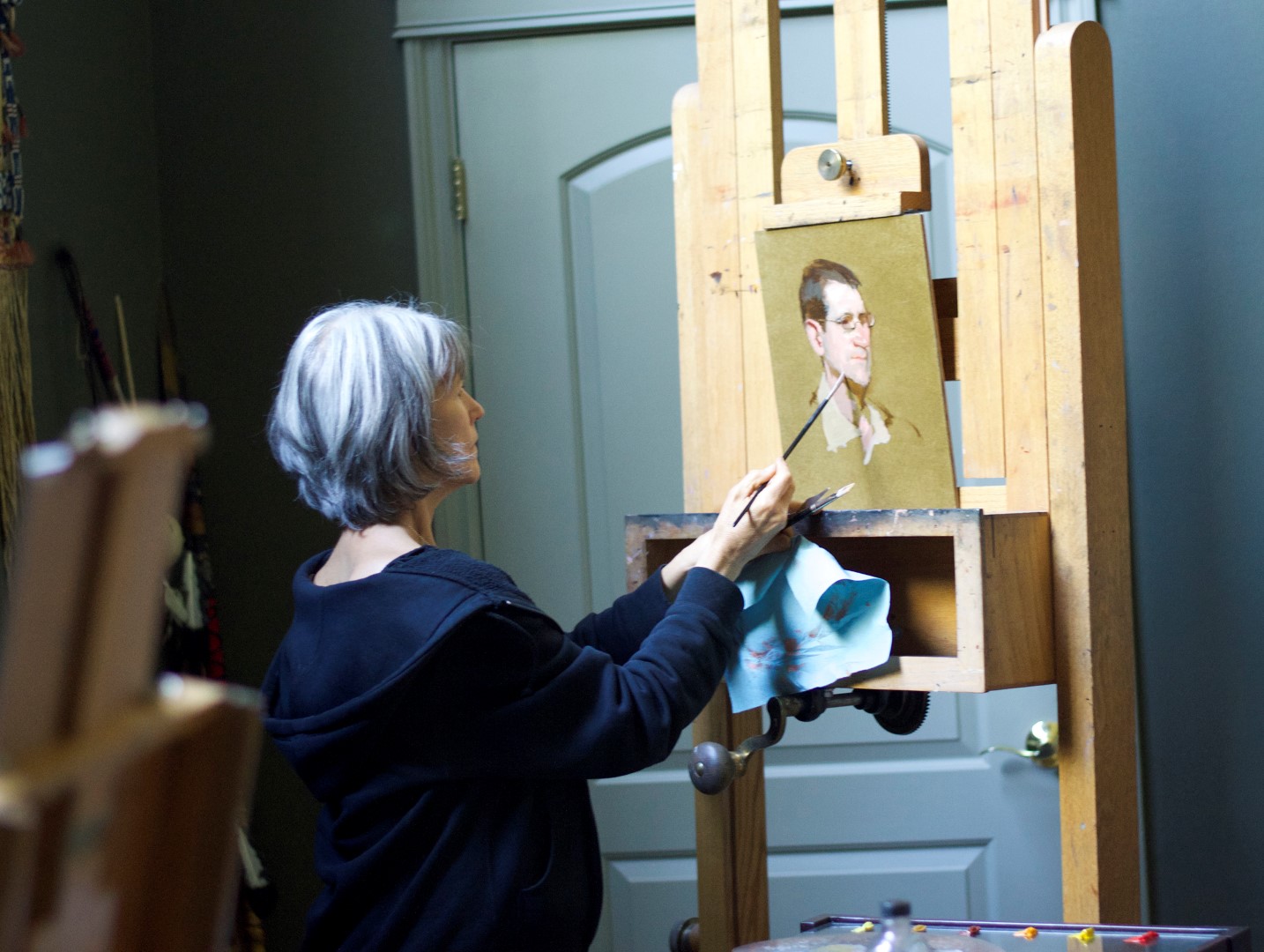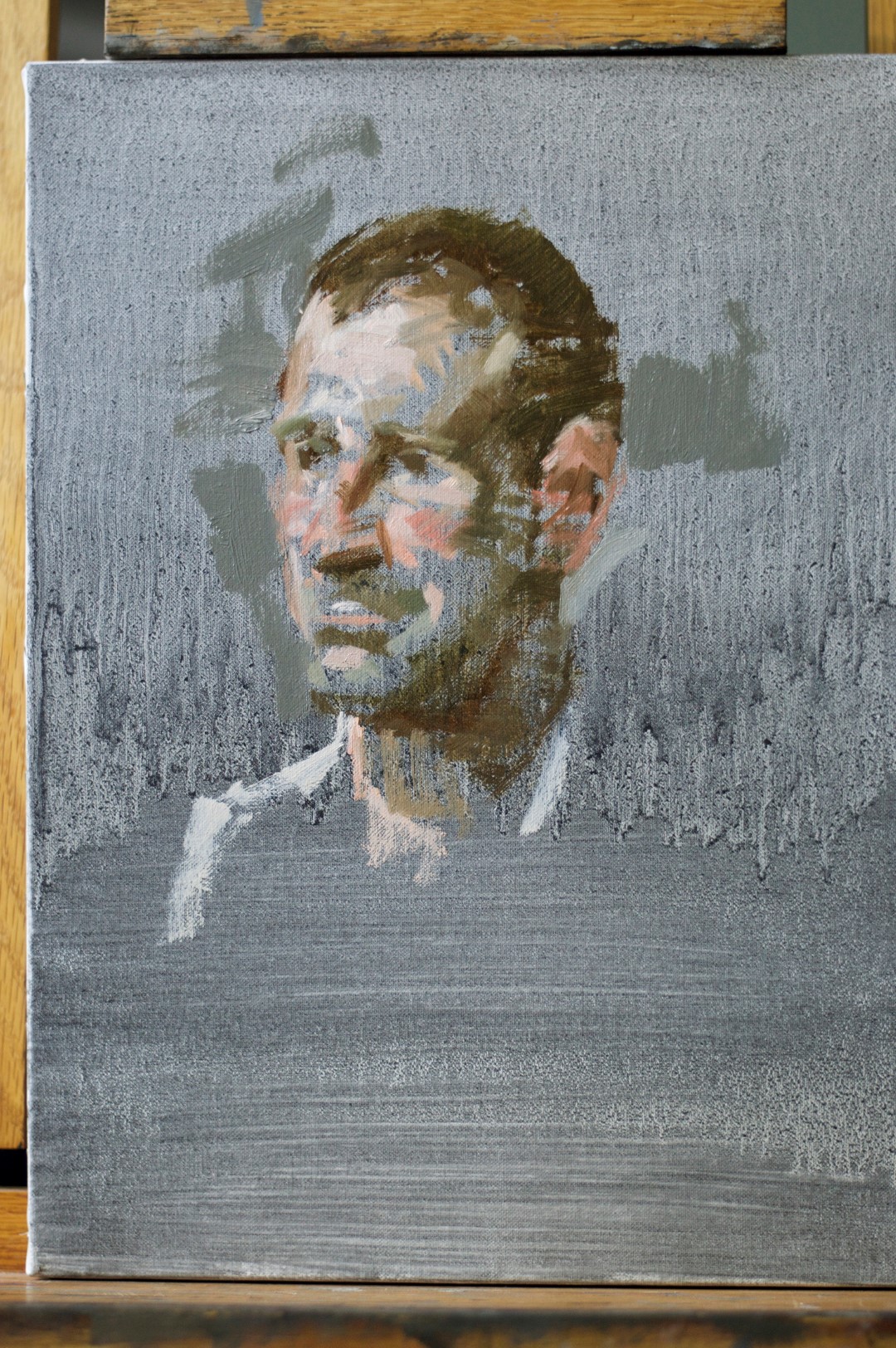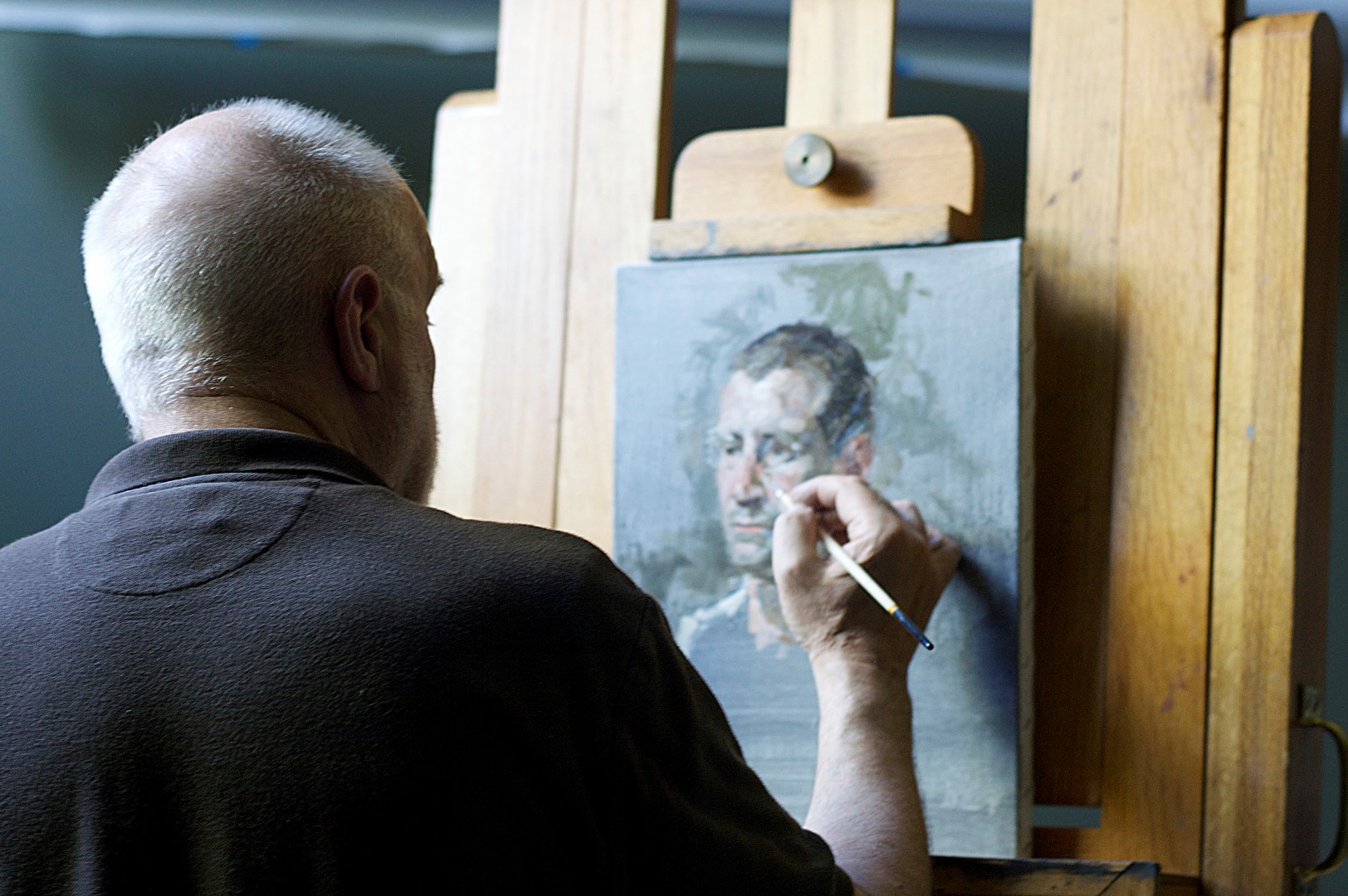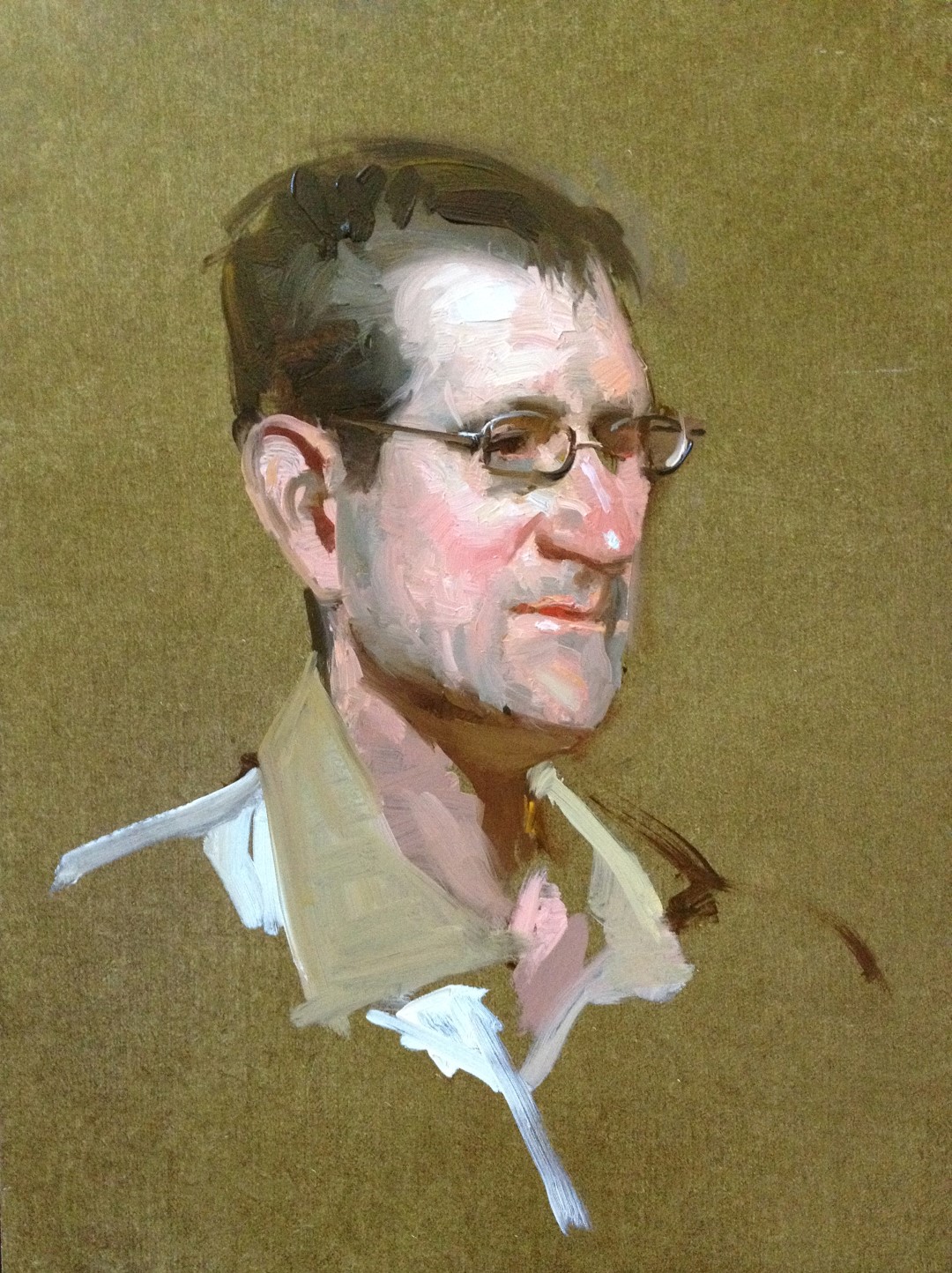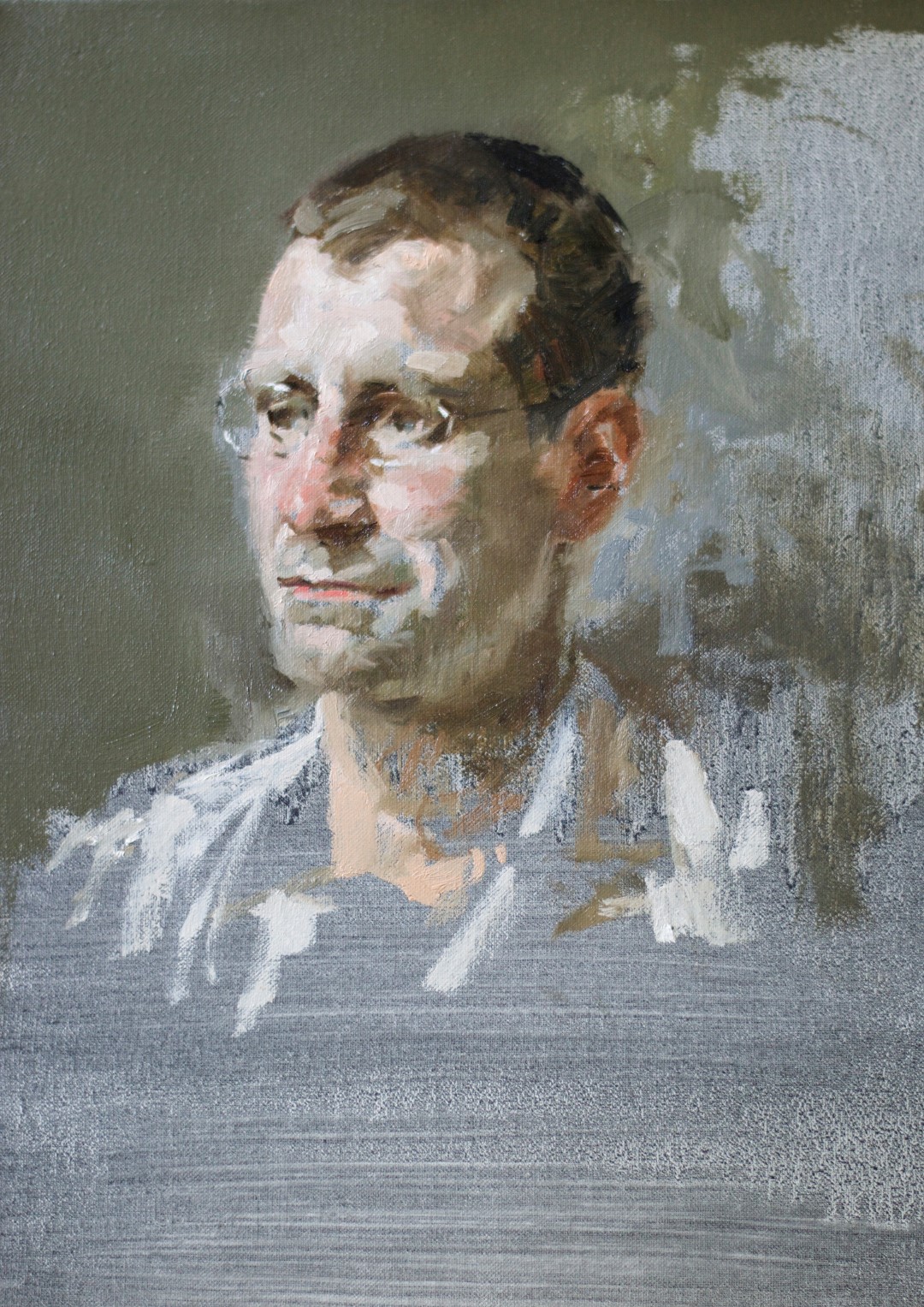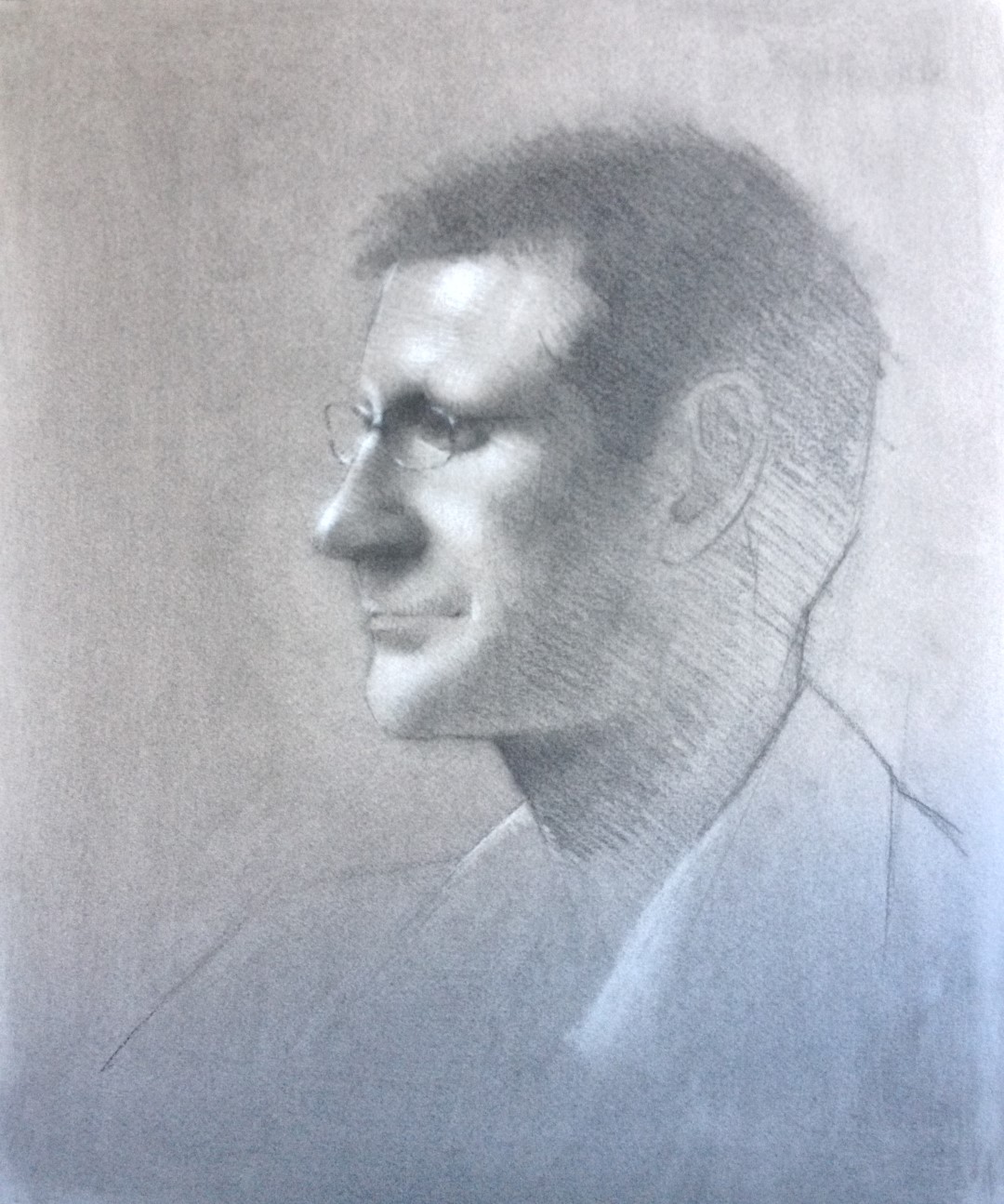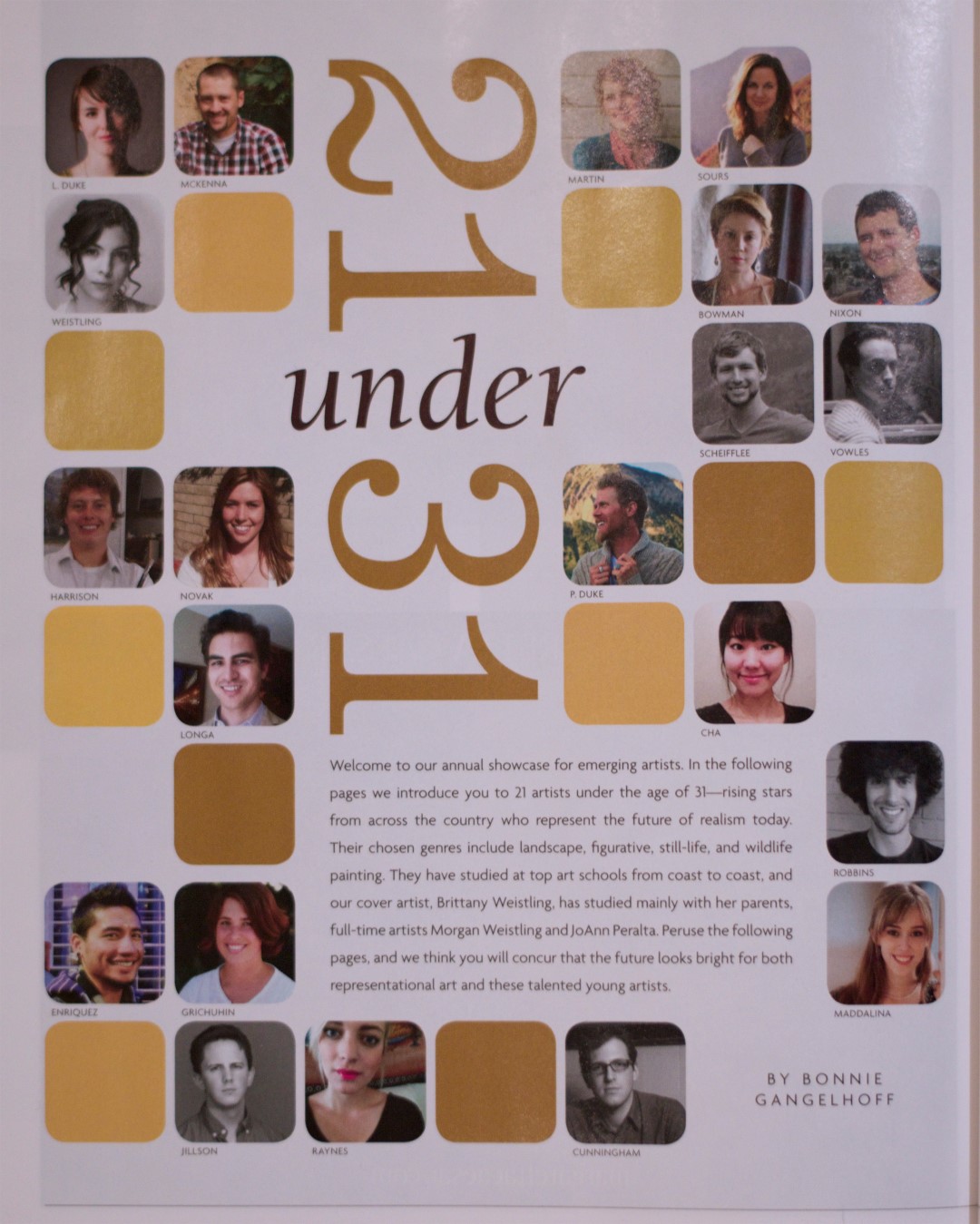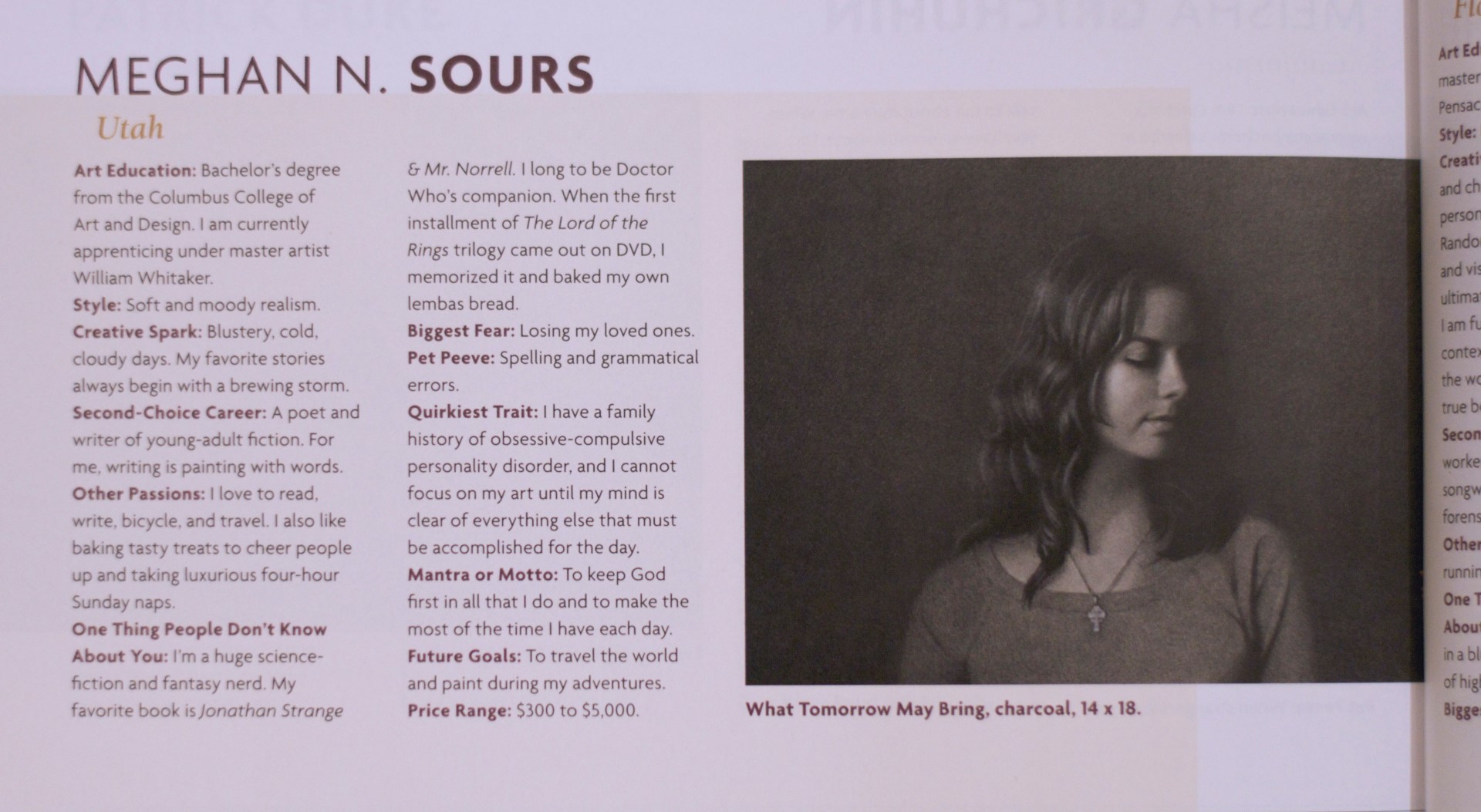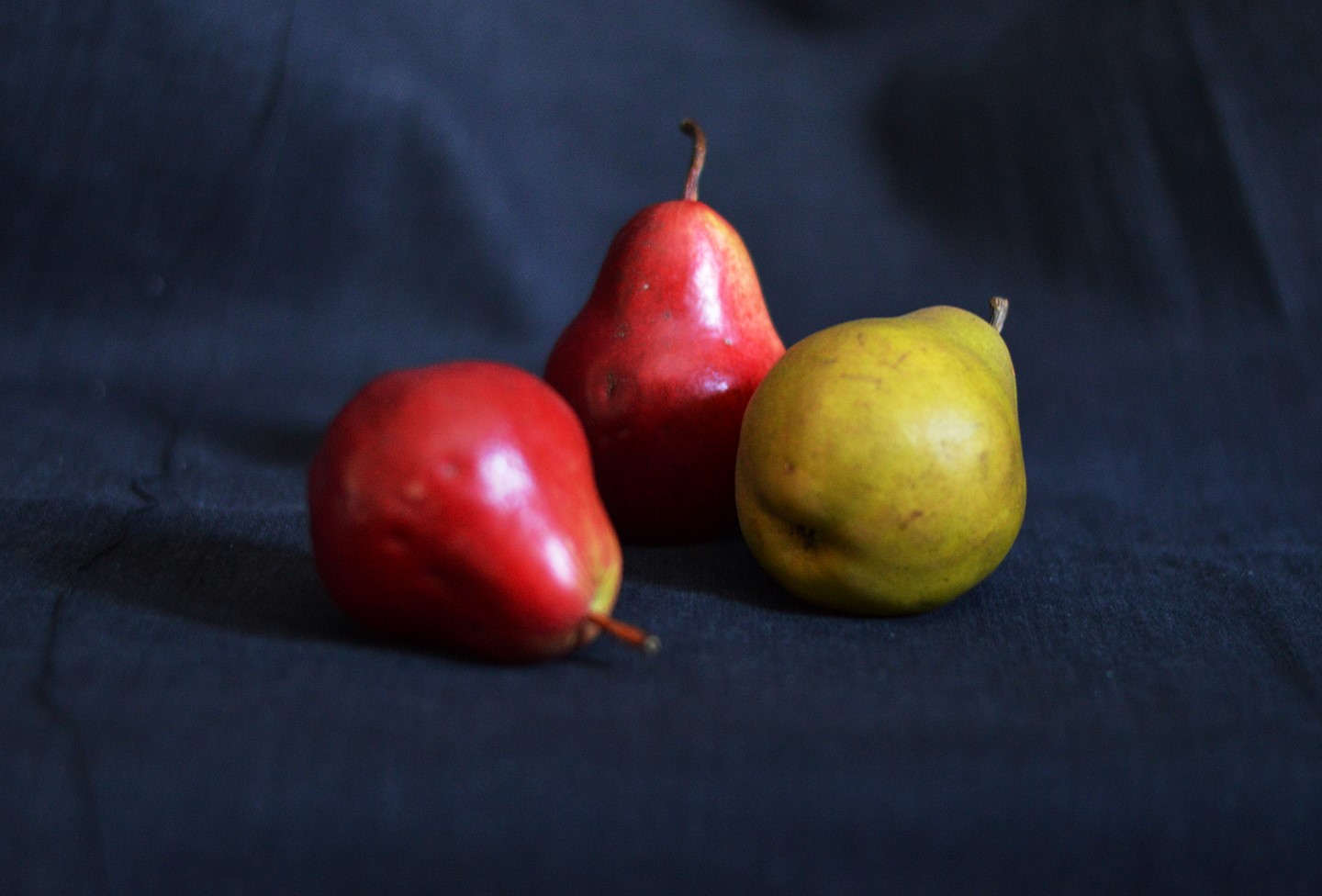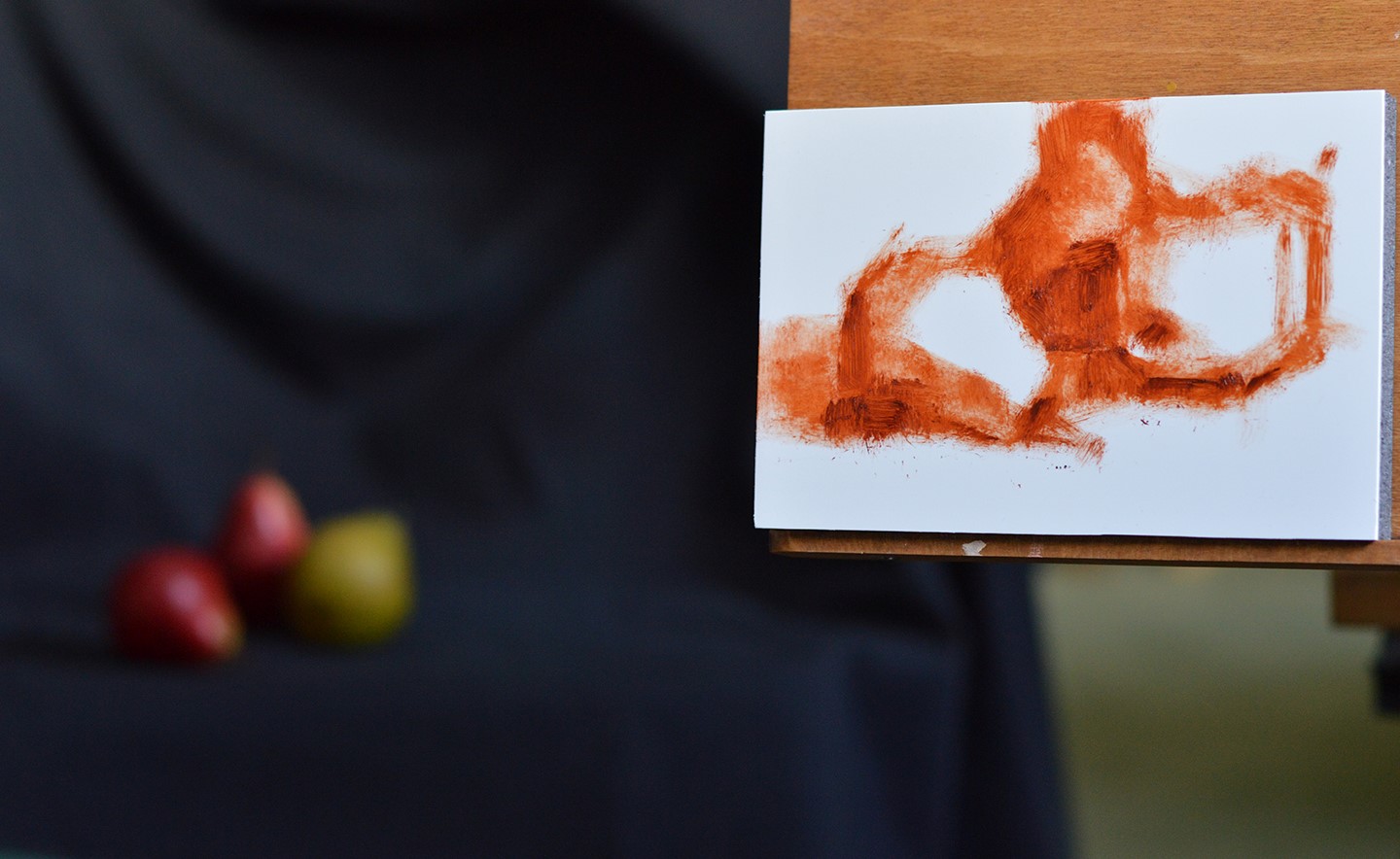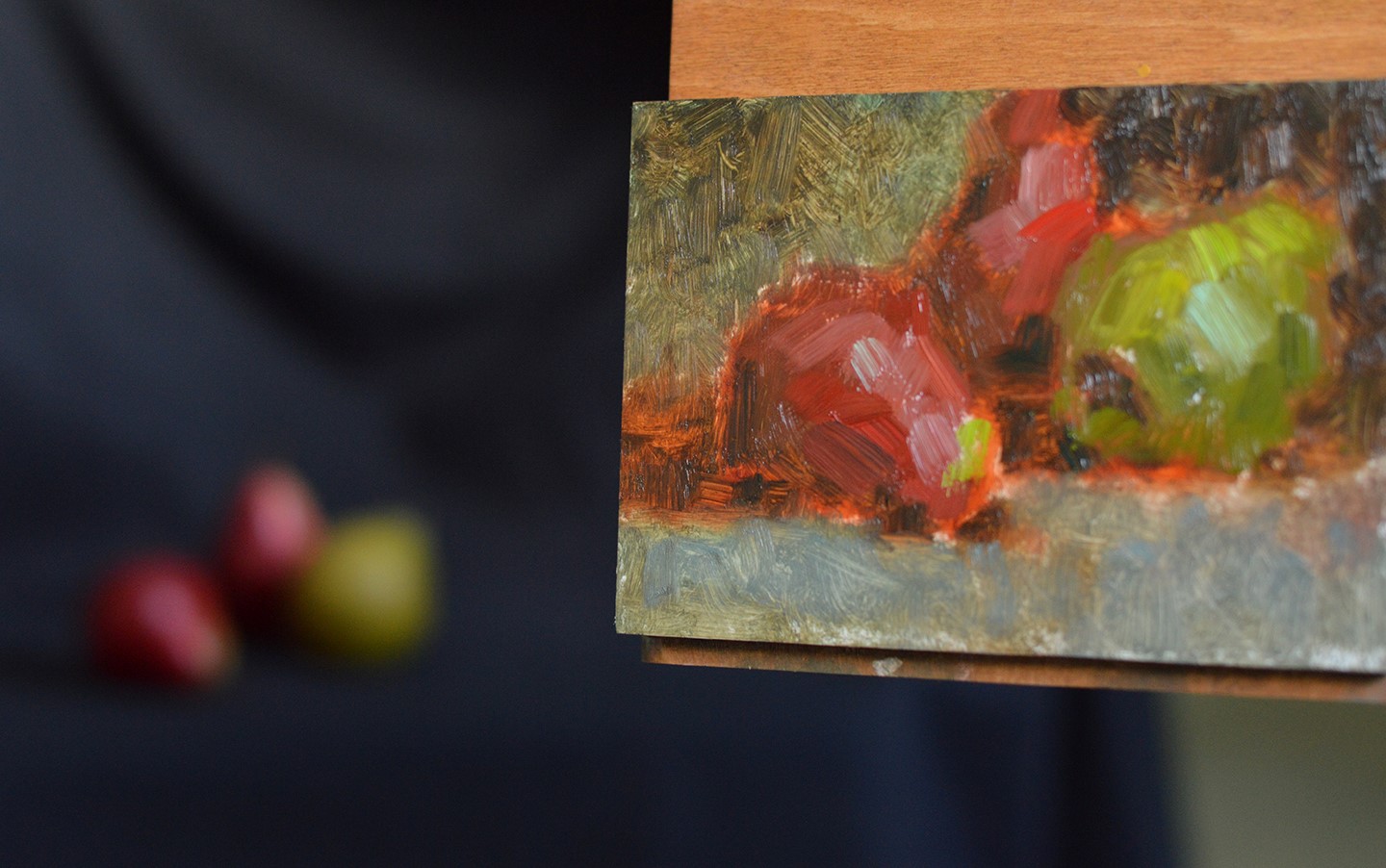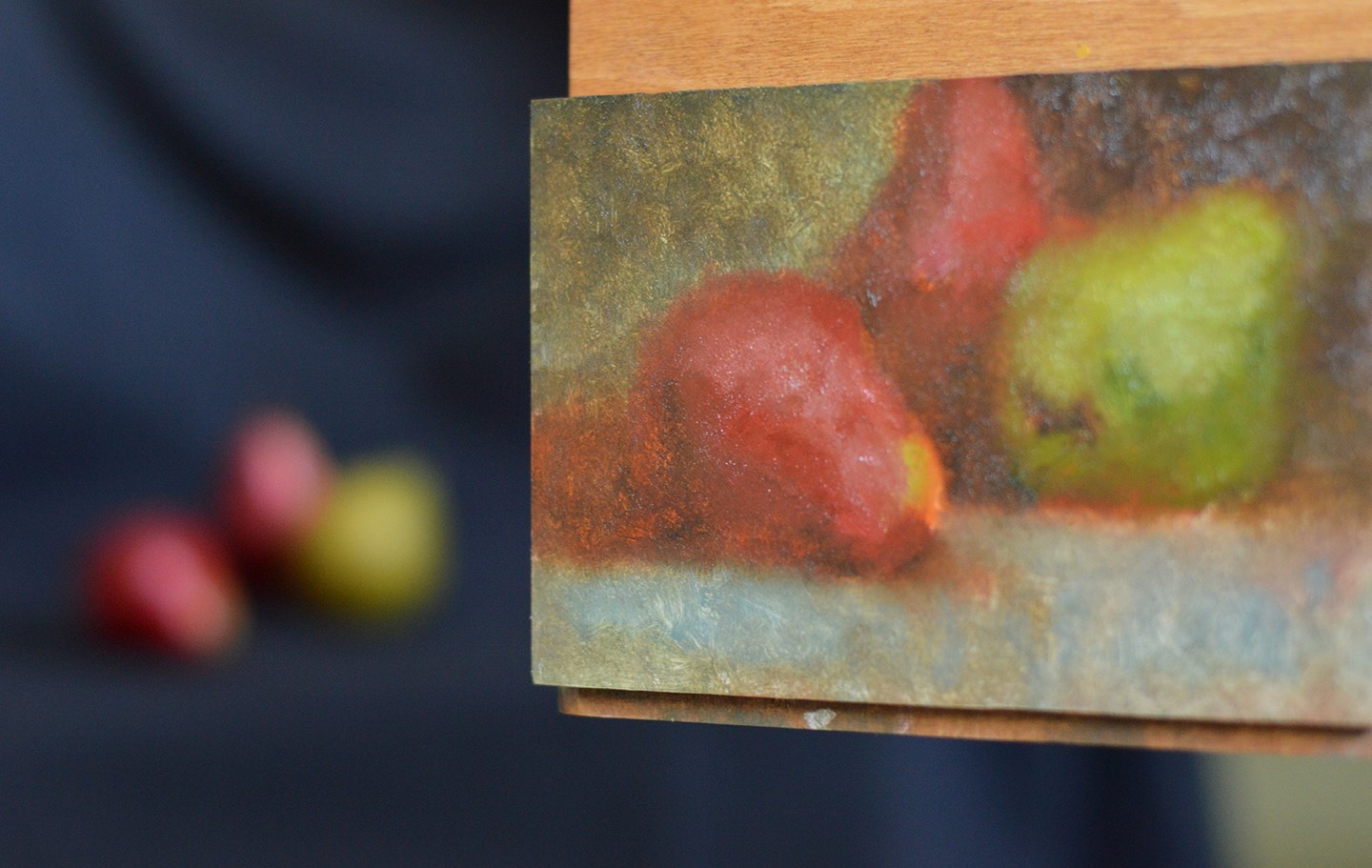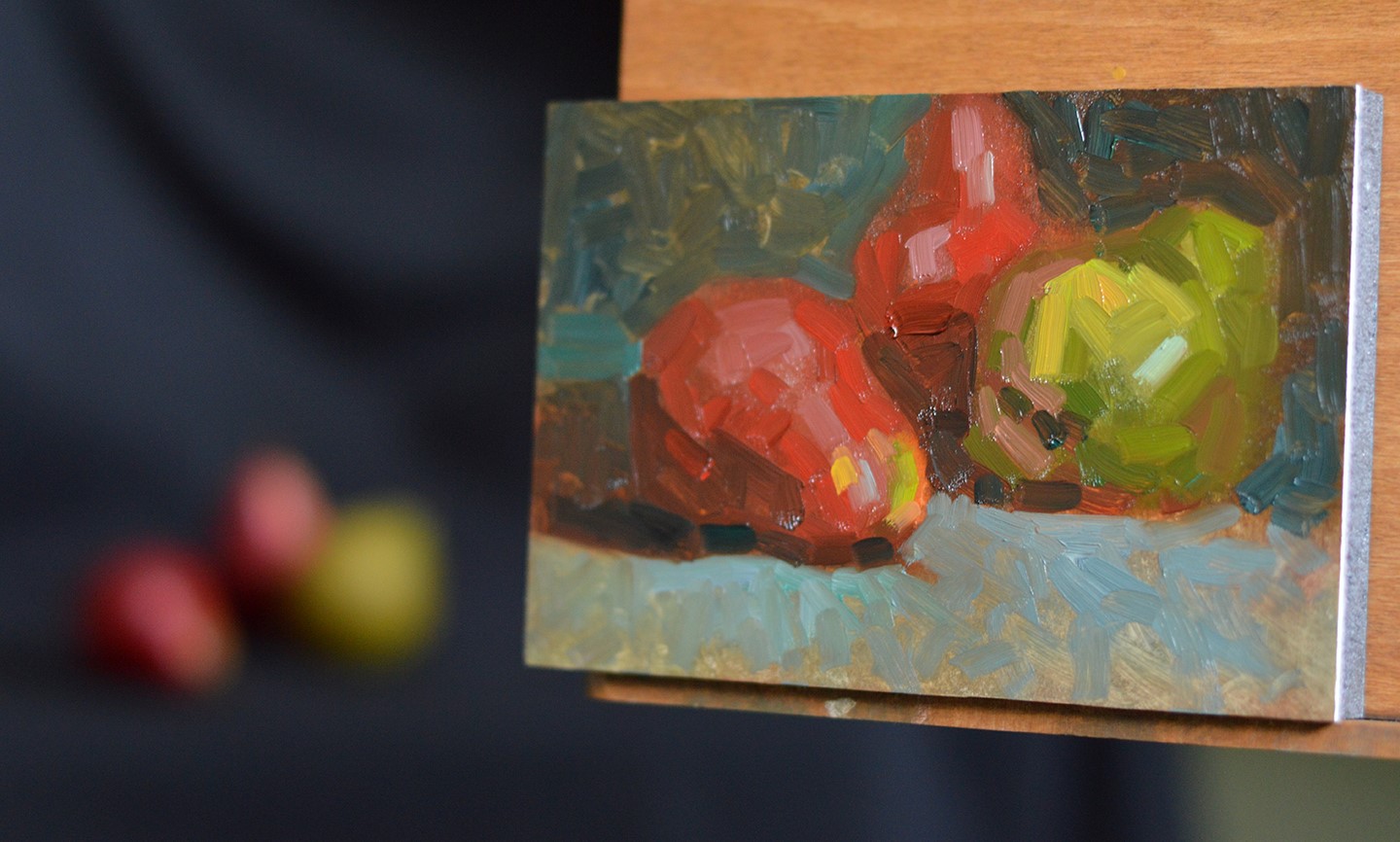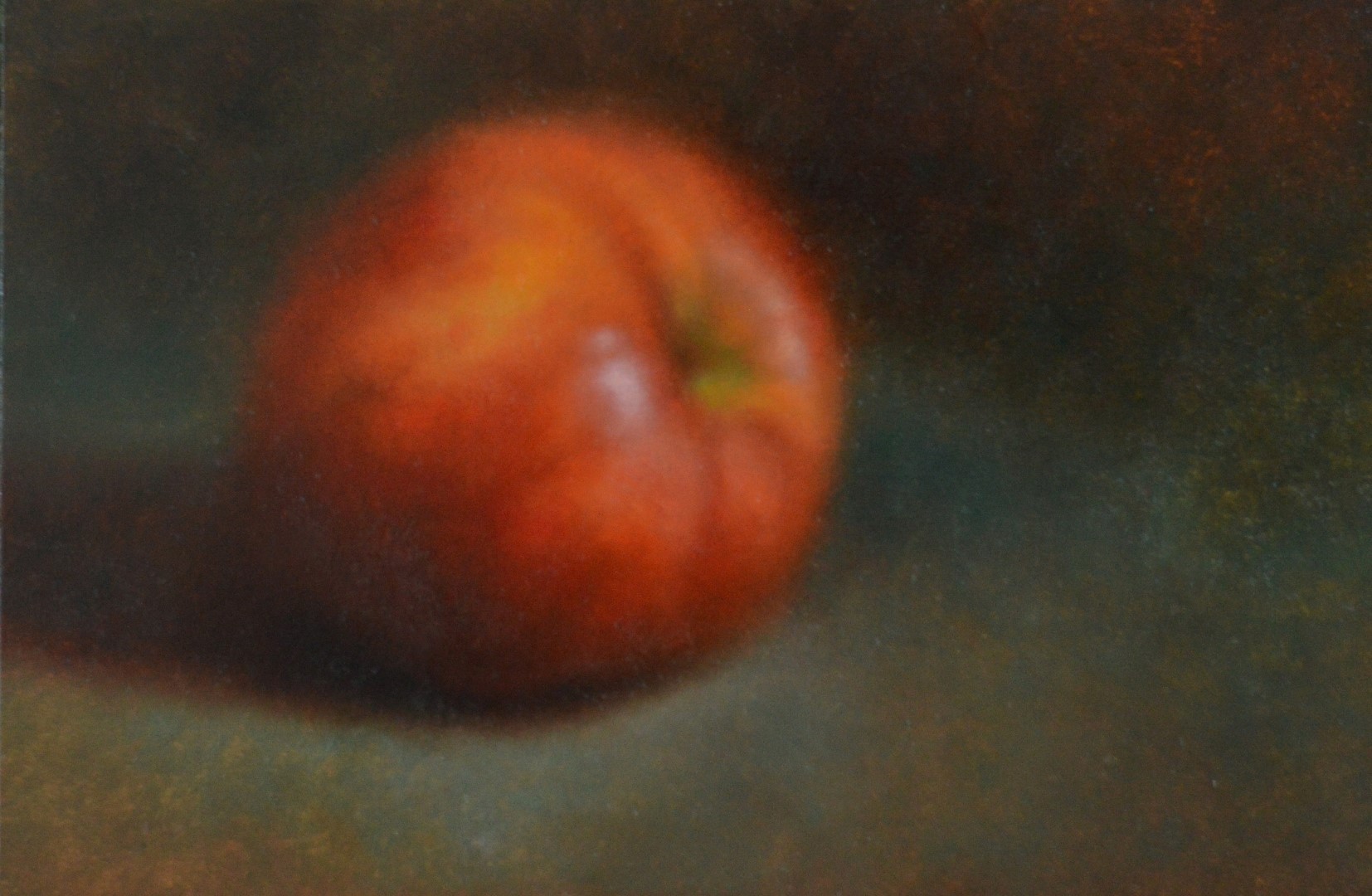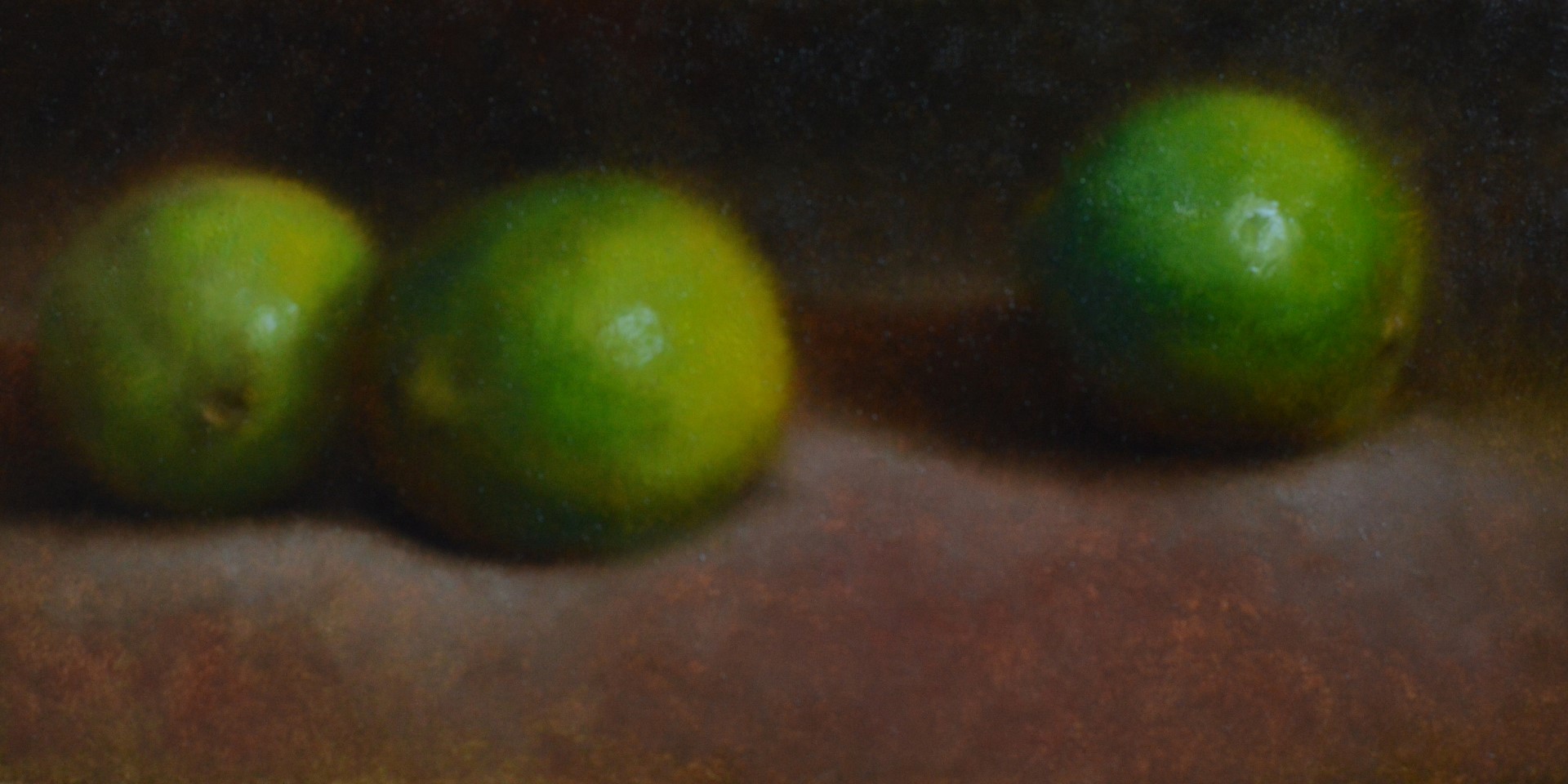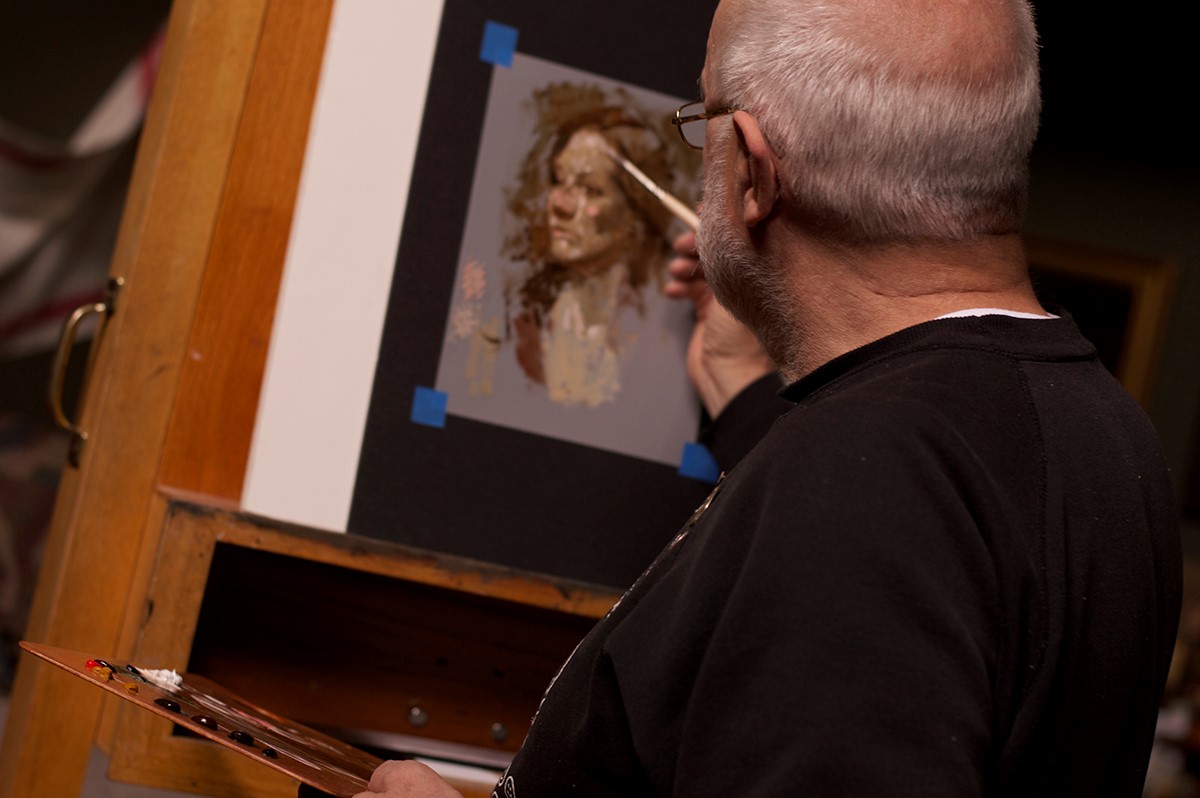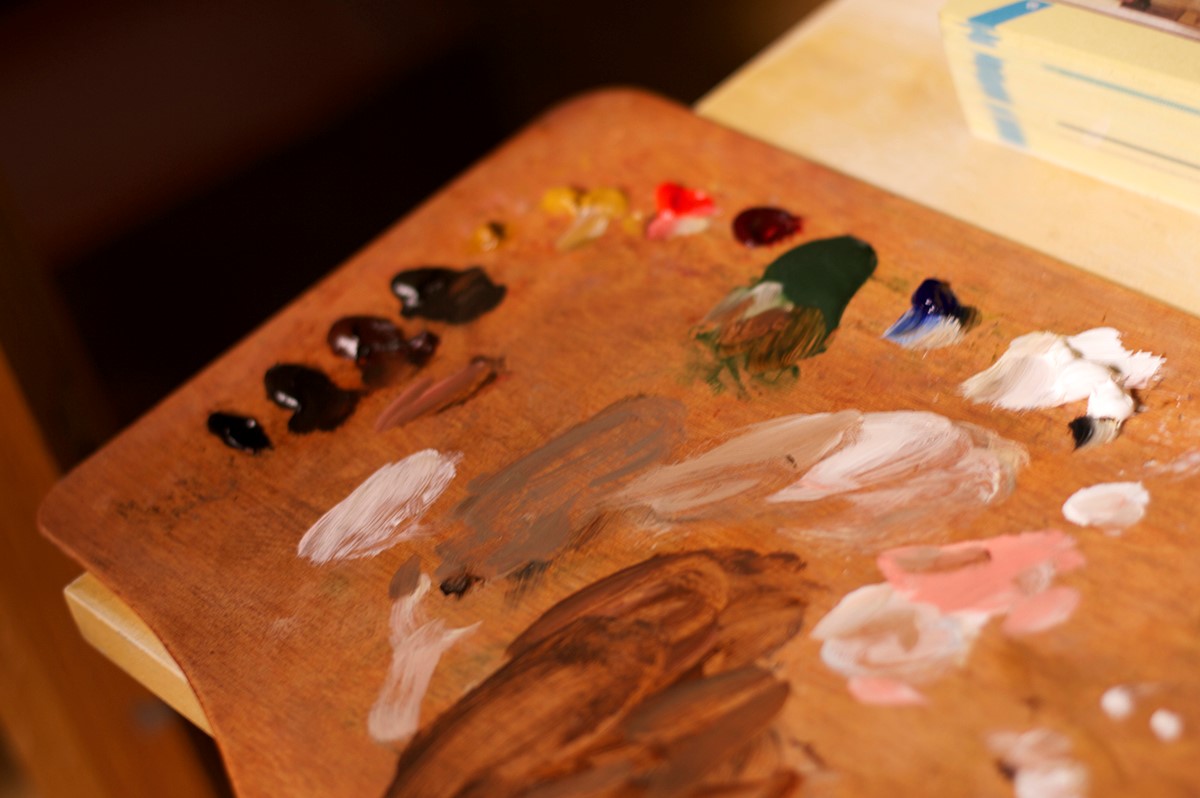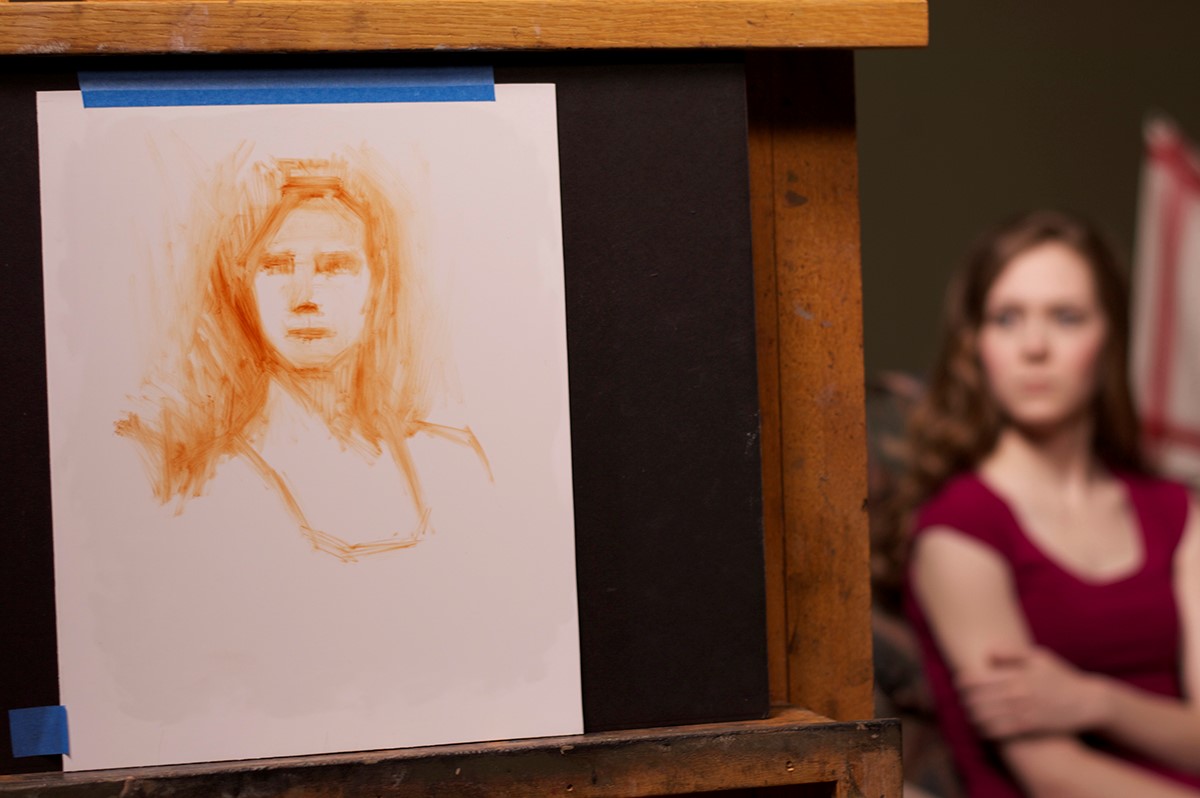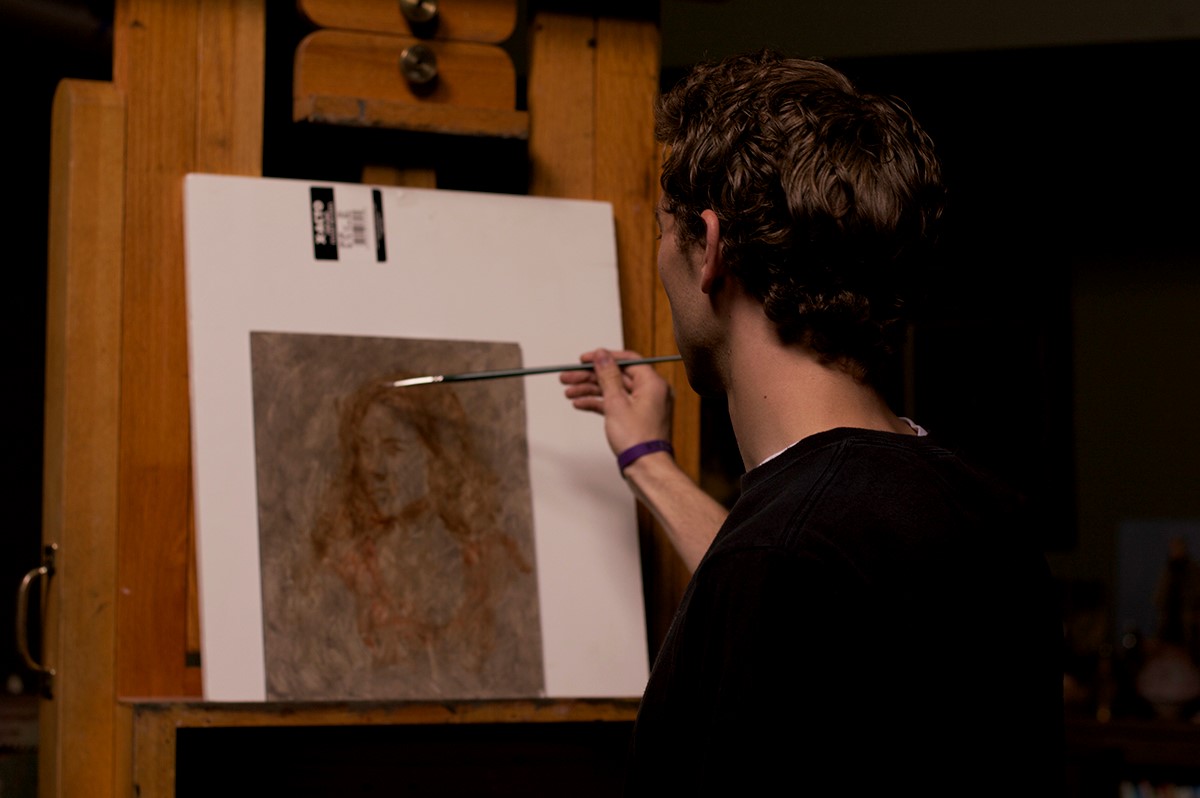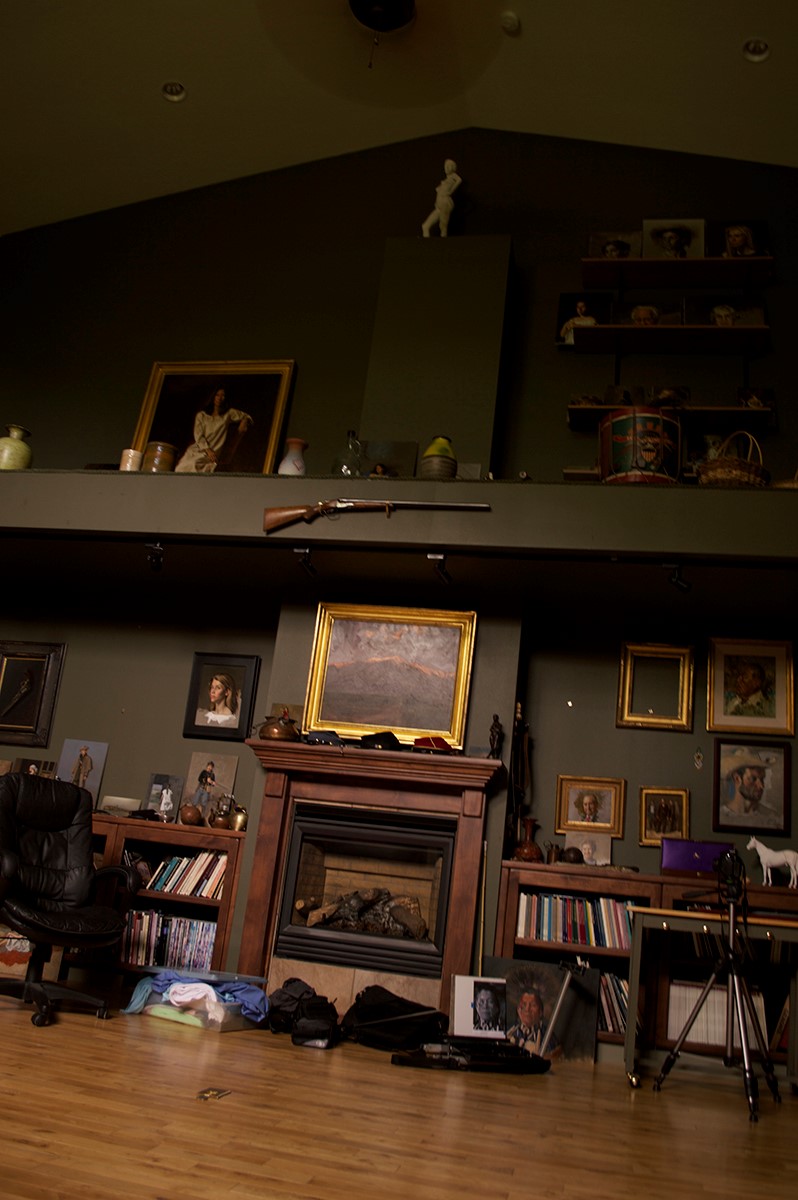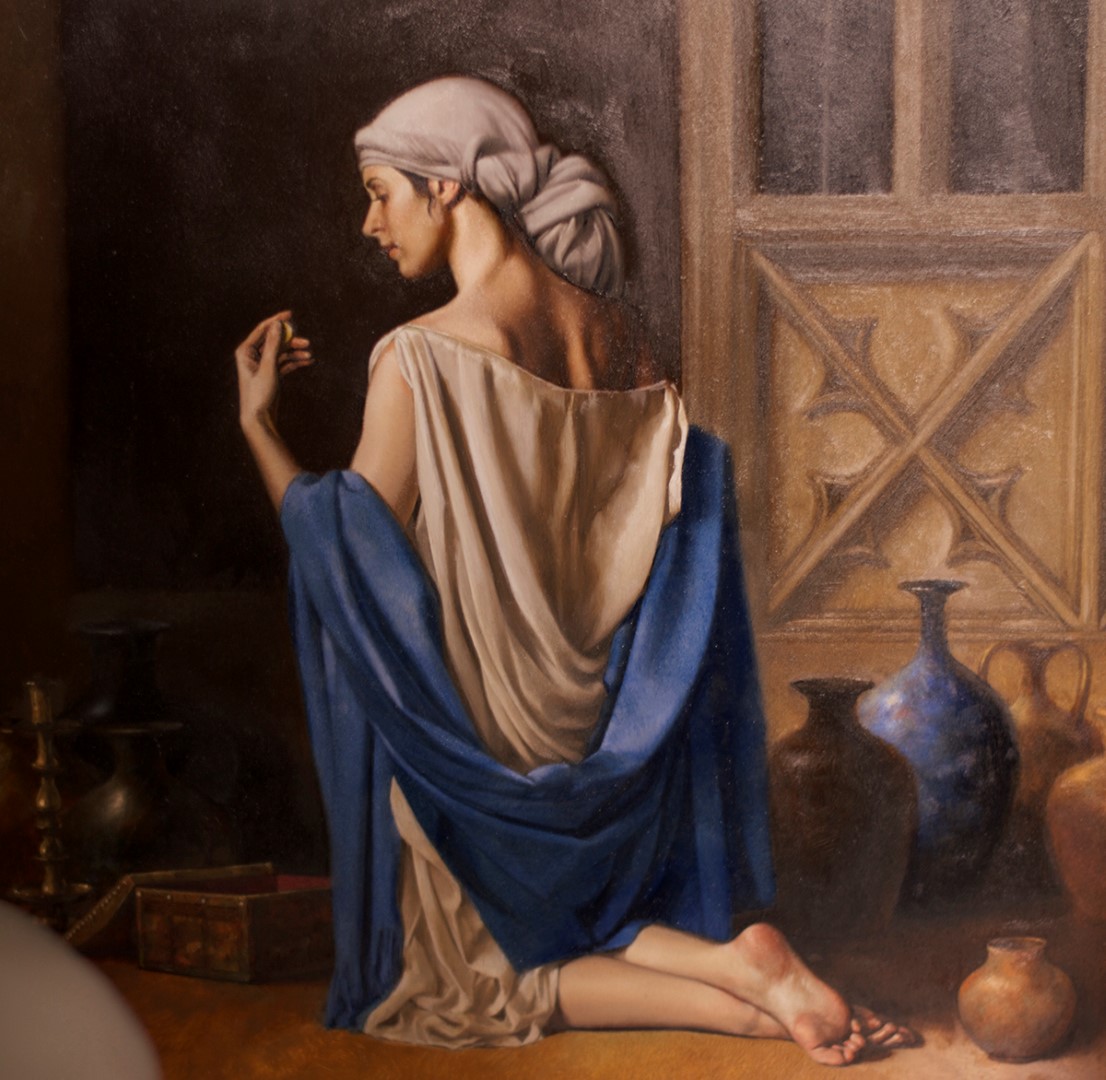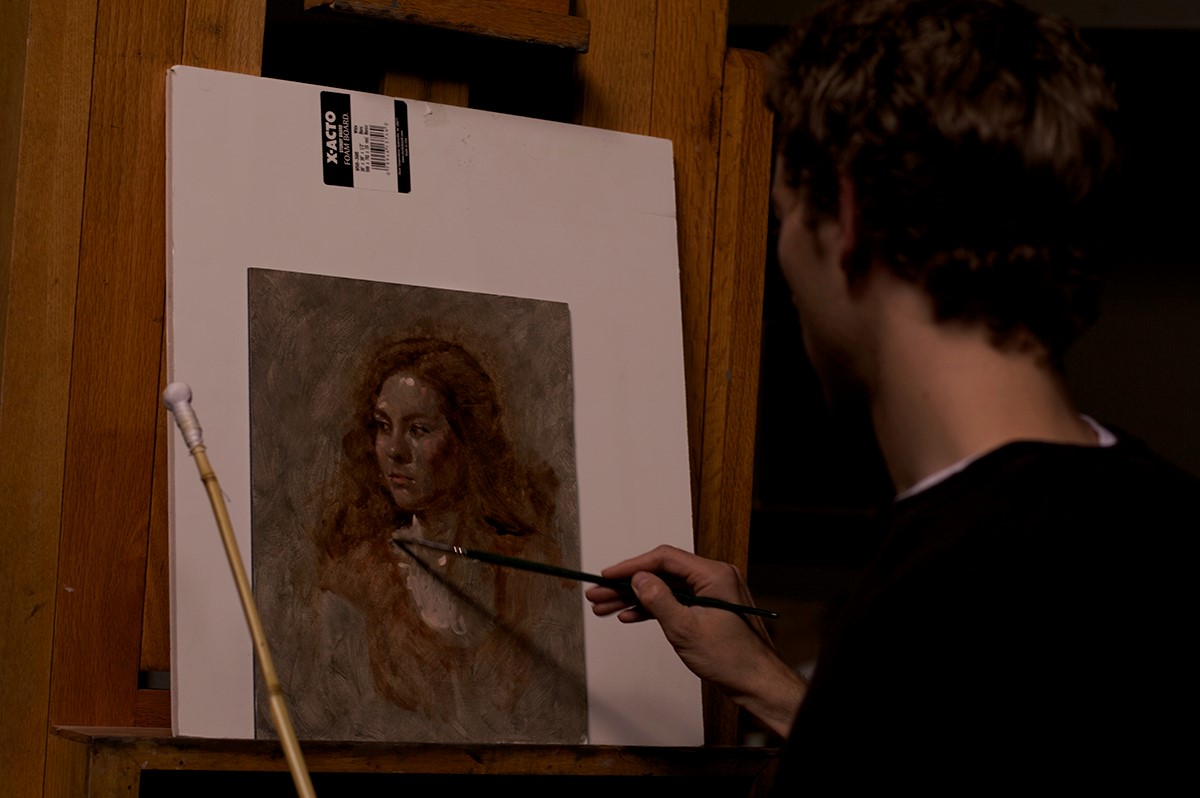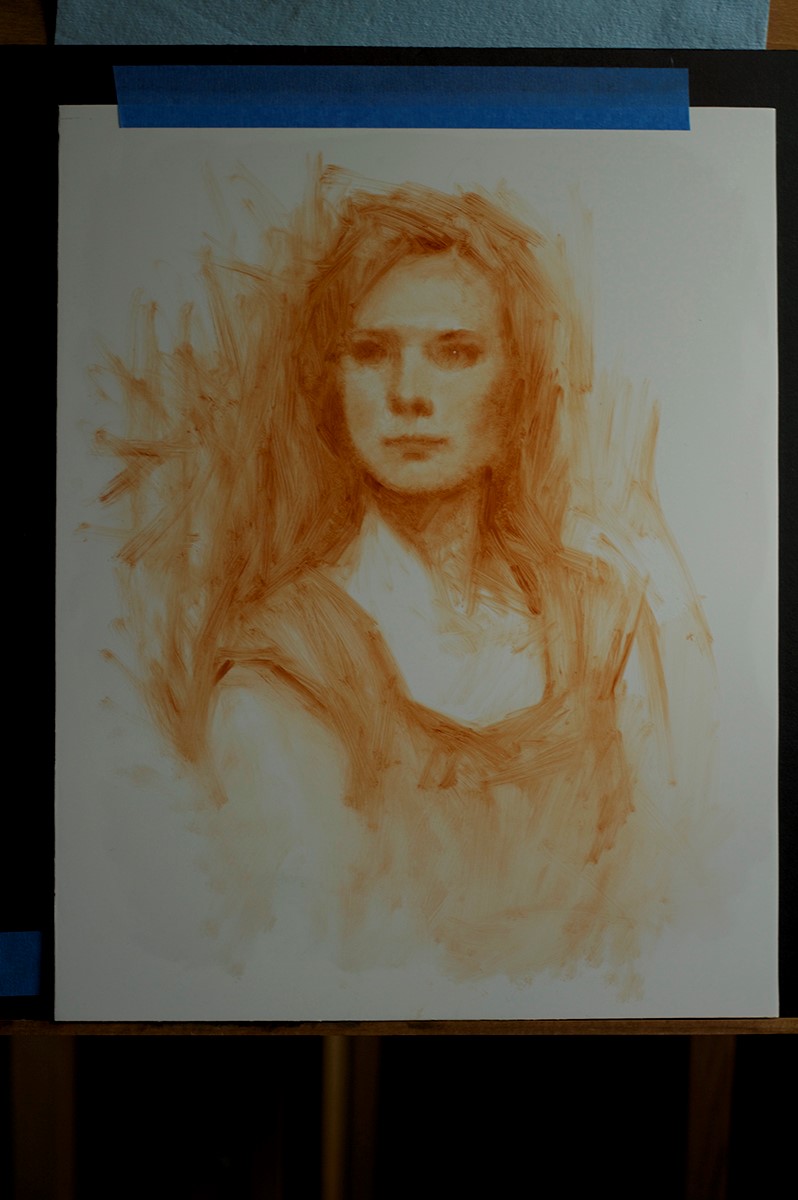Last week renowned artist Sherrie McGraw visited Provo for a series of lectures at BYU. She also spent a little of her precious time in the Bonneville Beach Studio for an informal painting session.
Bill asked if I wanted to join in. I said I did, but any time I was not drawing, or the model went on break, I scurried for the shadows and looked on with trembling reverence as the north light streaming in softly illuminated these two rock stars of the art world (was that an angel chorus?).
Seriously. Both Sherrie and Bill in one studio. I will admit I was very, very intimidated. Working alongside them, I felt like the clumsy kindergartner holding the fat blunt crayon. I could feel them in my mind looking down on me, “Oh, she’s drawing. How precious.”
Here are the results after about three hours. Our model, a lawyer and friend of Bill’s, was very animated during the session, which certainly made it interesting. The first painting (below) is Sherrie’s, the middle is Bill’s, and the drawing belongs to yours truly.
In other news, if you haven’t picked up a copy of Southwest Art’s September issue you should! I was featured in their annual 21 Under 31 article, a spotlight on the best of emerging artists who “represent the future of realism.”
You can also read the article online here and be sure to check out the fabulous talent of the other artists chosen. Although, compared to the opulence of awards and recognition garnered by Bill and Sherrie, this article seems like my equivalent of a gold star sticker. But you know what? We all have to start somewhere!
